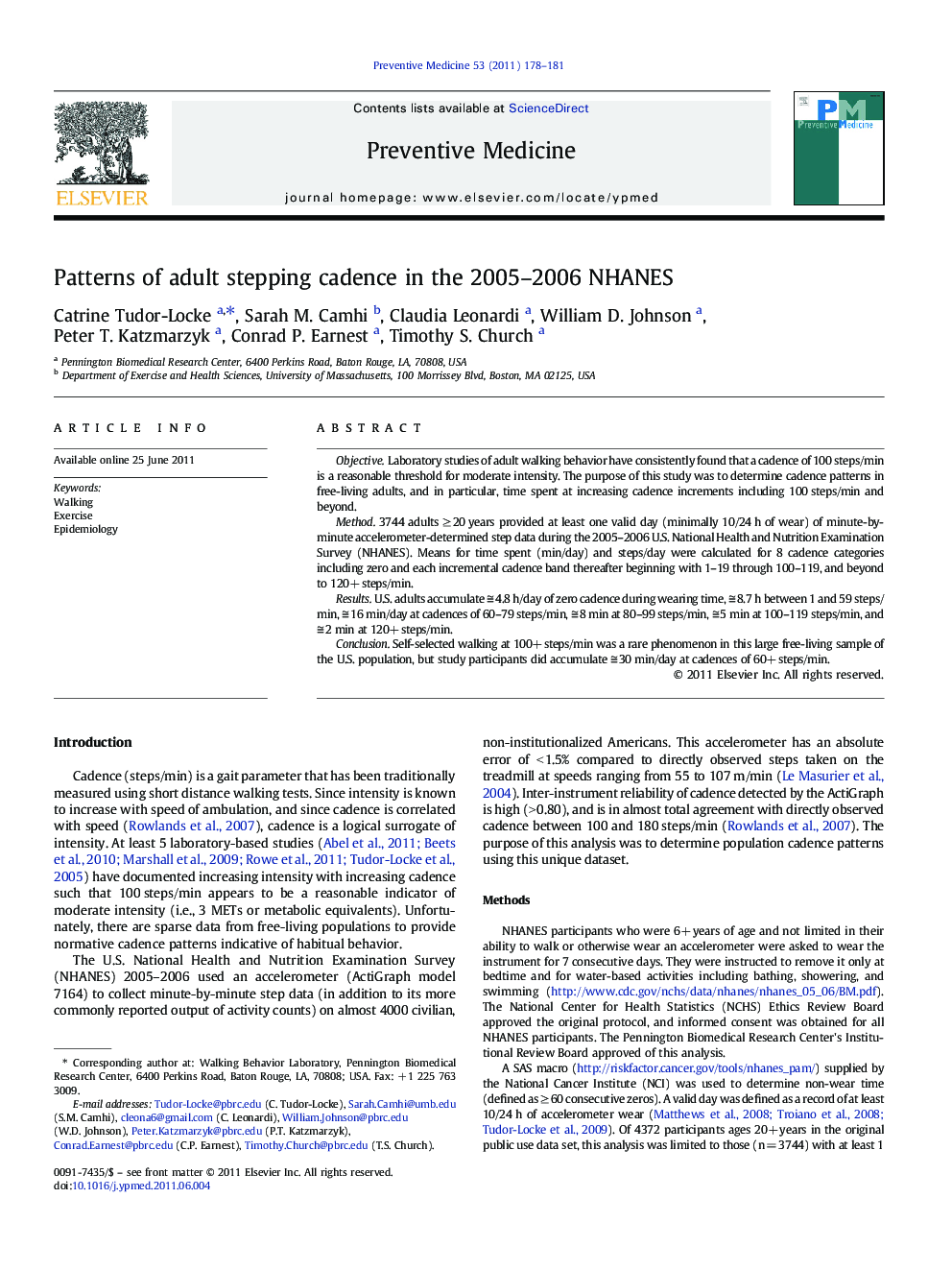| Article ID | Journal | Published Year | Pages | File Type |
|---|---|---|---|---|
| 3100740 | Preventive Medicine | 2011 | 4 Pages |
ObjectiveLaboratory studies of adult walking behavior have consistently found that a cadence of 100 steps/min is a reasonable threshold for moderate intensity. The purpose of this study was to determine cadence patterns in free-living adults, and in particular, time spent at increasing cadence increments including 100 steps/min and beyond.Method3744 adults ≥ 20 years provided at least one valid day (minimally 10/24 h of wear) of minute-by-minute accelerometer-determined step data during the 2005–2006 U.S. National Health and Nutrition Examination Survey (NHANES). Means for time spent (min/day) and steps/day were calculated for 8 cadence categories including zero and each incremental cadence band thereafter beginning with 1–19 through 100–119, and beyond to 120+ steps/min.ResultsU.S. adults accumulate ≅ 4.8 h/day of zero cadence during wearing time, ≅ 8.7 h between 1 and 59 steps/min, ≅ 16 min/day at cadences of 60–79 steps/min, ≅ 8 min at 80–99 steps/min, ≅ 5 min at 100–119 steps/min, and ≅ 2 min at 120+ steps/min.ConclusionSelf-selected walking at 100+ steps/min was a rare phenomenon in this large free-living sample of the U.S. population, but study participants did accumulate ≅ 30 min/day at cadences of 60+ steps/min.
► Walking at 100+ steps/min is a rare phenomenon in a free-living population. ► However, they do average ≅ 30 min/day at cadences of 60+ steps/min. ► Time spent at zero cadence (i.e., non-movement) increases with age for both sexes. ► Older adults show more pronounced time reductions at incrementally higher cadences.
